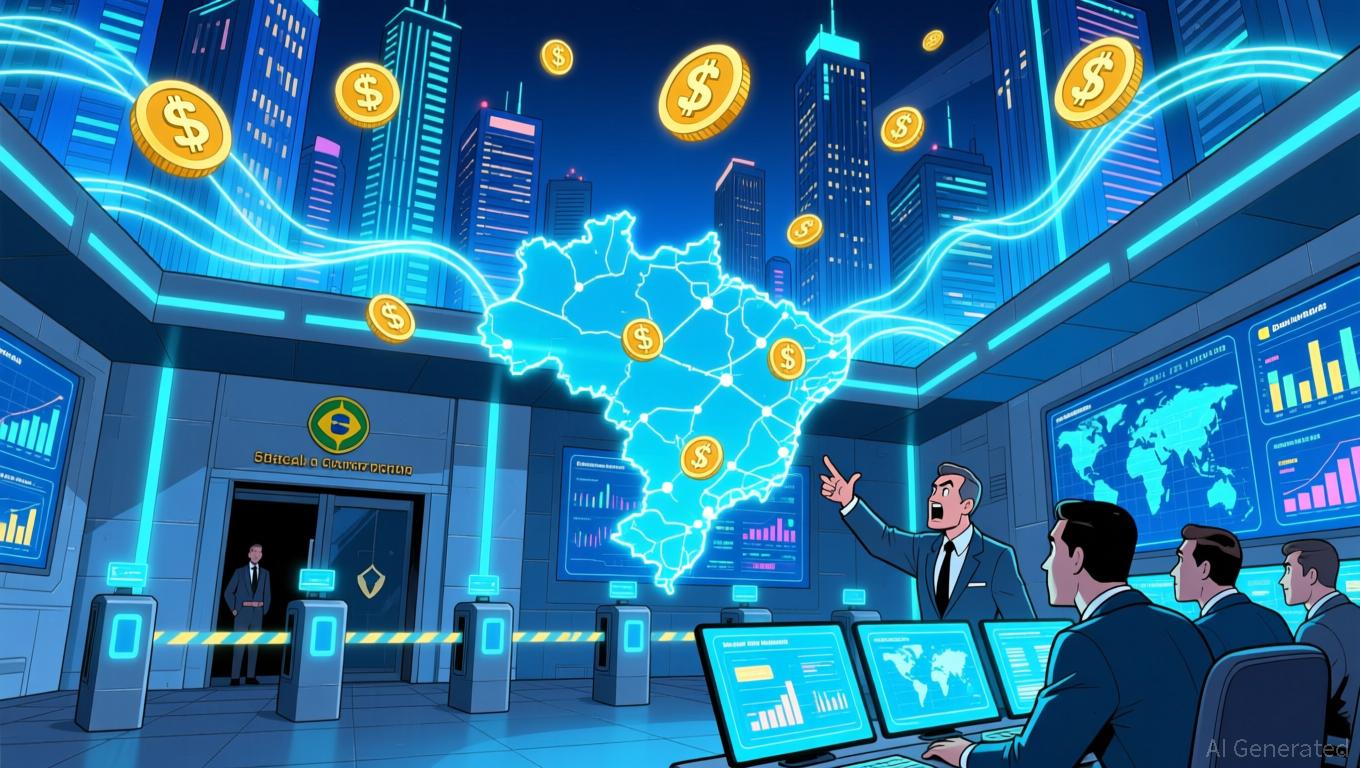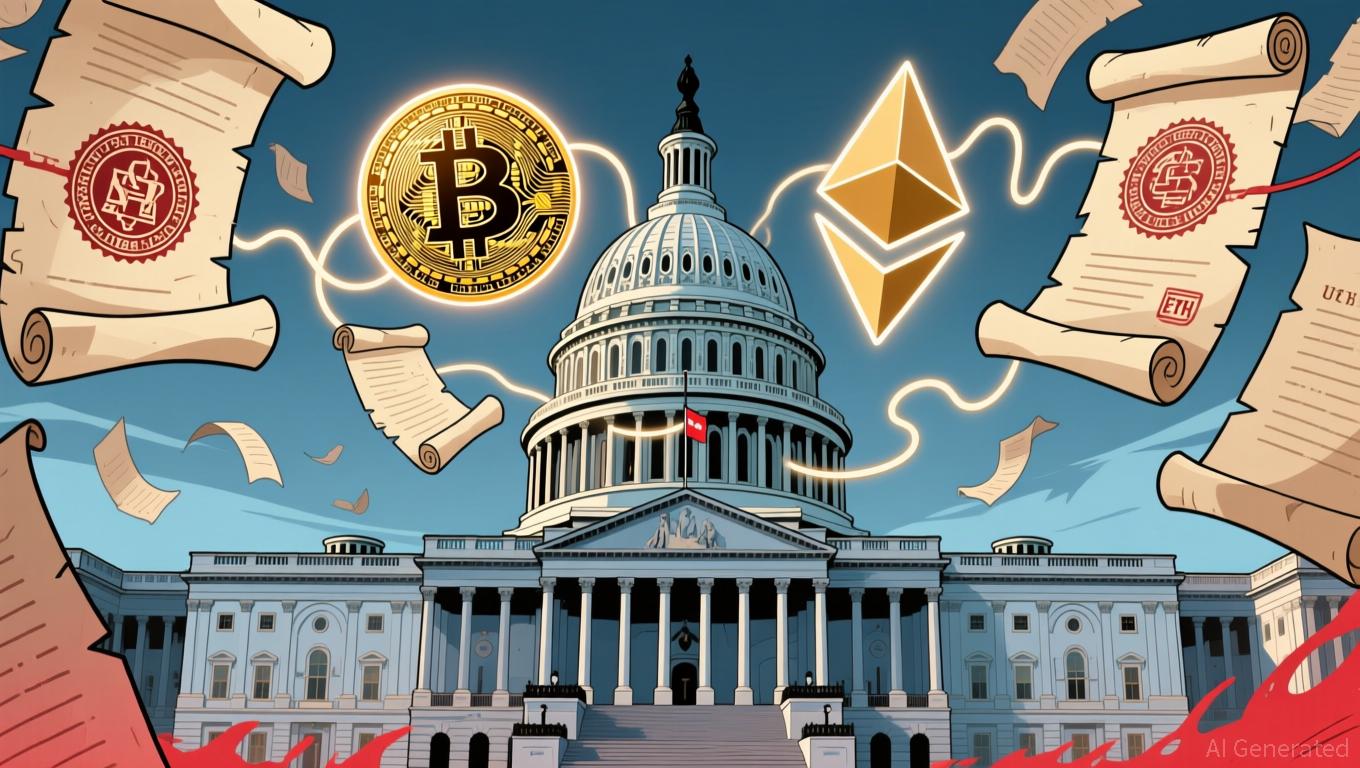WLFI's $22M Token Destruction: Will Trump-Endorsed Cryptocurrency Restore Confidence?
- WLFI burned 166.667 million tokens ($22.14M) from hacked wallets, reallocating them to secure recovery addresses via emergency transactions. - The breach stemmed from phishing and third-party lapses, not smart contract flaws, with frozen wallets tested for months before reallocation. - The burn-and-reallocate mechanism, designed for lost access or attacks, highlights WLFI's focus on compliance and fund protection during recovery. - The incident intensifies scrutiny over WLFI's regulatory compliance and t
World Liberty Financial (WLFI), a cryptocurrency initiative supported by the Trump family, carried out an urgent intervention on November 20, destroying 166.667 million
The emergency protocol was created to handle two main situations: investors losing access to their wallets before their tokens were vested, or bad actors exploiting weaknesses to obtain WLFI tokens
From the outset, WLFI’s token model included a burn-and-redistribute feature, empowering the deployer to retrieve tokens from breached wallets and allocate them to verified users via secure processes
Users whose wallets are still frozen and have not been verified can request recovery through WLFI’s support center, but must first complete KYC verification to restore access
The destroyed tokens account for about 1.7% of WLFI’s total token supply, according to on-chain tracking by Emmett Gallic
WLFI’s governance token, which was introduced earlier this year, has been criticized for its intricate token structure and perceived lack of openness. The recent security breach and the project’s handling of it are expected to be a significant test of its operational reliability, especially given its ties to prominent political figures
---
Disclaimer: The content of this article solely reflects the author's opinion and does not represent the platform in any capacity. This article is not intended to serve as a reference for making investment decisions.
You may also like
Zerohash Amidst Crypto’s Ultimate Turmoil
- Zerohash faces liquidity and reputational risks amid crypto market turmoil, driven by unconfirmed survey claims and sector-wide volatility. - A $168M liquidation event on GMX highlights systemic risks from high-leverage trading, echoing prior $100M losses by trader James Wynn. - Regulatory uncertainty intensifies with U.S. stablecoin projections, EU MiCAR compliance shifts, and Trump-era pardons complicating compliance frameworks. - Institutional investors pivot to yield-bearing stablecoins (e.g., 15% AP

Brazil Suggests Taxing Stablecoins to Address $30 Billion Shortfall and Meet International Norms
- Brazil plans to tax stablecoin transactions via expanded IOF to align with global standards and recover $30B in lost revenue. - Stablecoin transfers (e.g., USDT) will be reclassified as forex operations under 2025 central bank rules, subjecting them to IOF tax. - The move aligns with OECD's CARF framework, enabling international crypto data sharing and joining global efforts to combat tax evasion. - Political debates persist over crypto tax exemptions, while regulators aim to curb money laundering and in

CFTC's Expansion into Crypto: Providing Guidance or Hindering Progress?
- U.S. Senate Banking Committee will vote in December 2025 on a crypto bill designating Bitcoin and Ether as CFTC-regulated commodities to resolve SEC-CFTC jurisdiction conflicts. - The bill mandates exchange rules like customer fund segregation and conflict controls, addressing vulnerabilities exposed by FTX-style failures. - Global regulatory shifts and U.S. firms' European expansion (e.g., Ondo, BitGo) highlight urgency for a framework balancing innovation with risk mitigation. - Proponents claim the bi

EMS Market to Reach $219 Billion: AI, Blockchain, and Sustainability Initiatives Transform Energy Sector by 2034
- Global EMS market to grow from $56B in 2025 to $219.3B by 2034 at 16.4% CAGR, driven by energy costs, regulations, and AI/smart grid/blockchain adoption. - AI and blockchain enable real-time energy optimization, peer-to-peer trading, and decentralized renewable energy management, while 5G and storage tech expand EV integration. - Governments accelerate adoption through net-zero policies, and EaaS models democratize access by shifting to subscription-based cost structures for SMEs. - High integration cost
